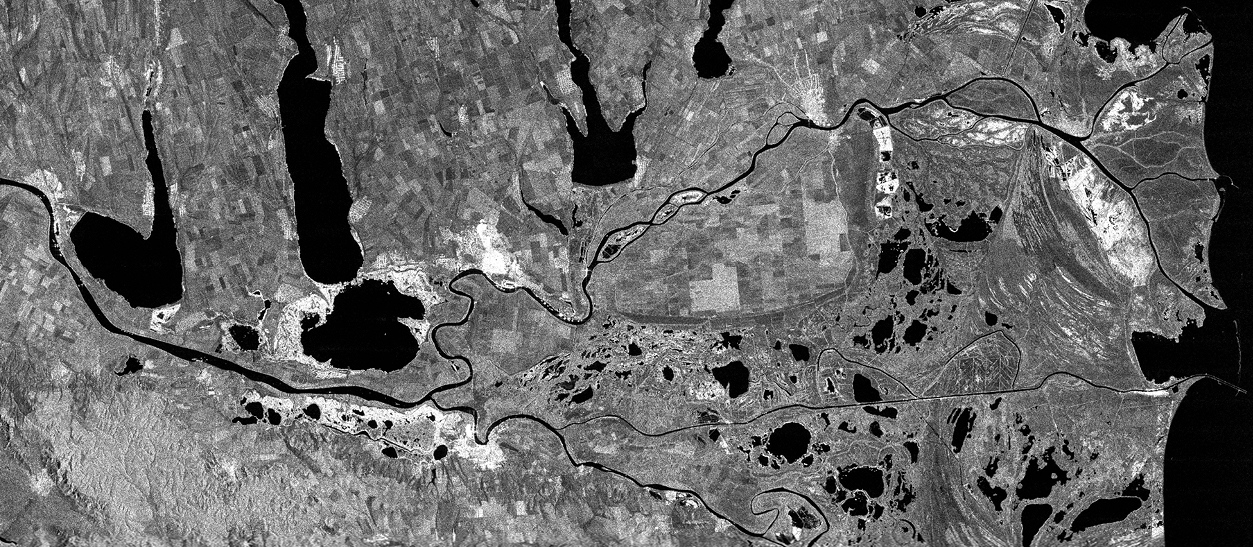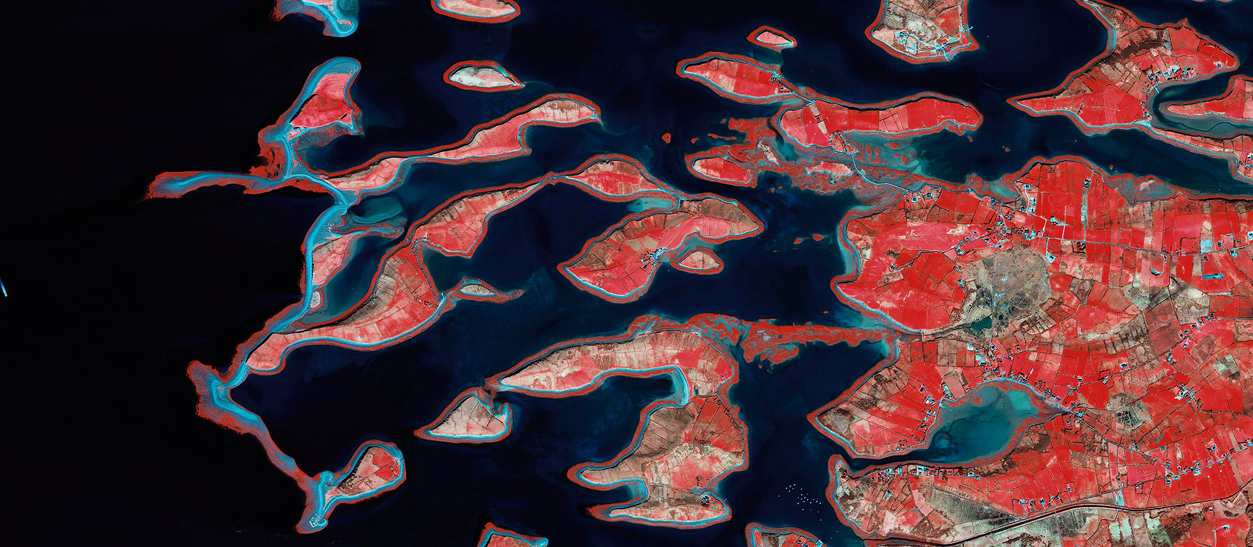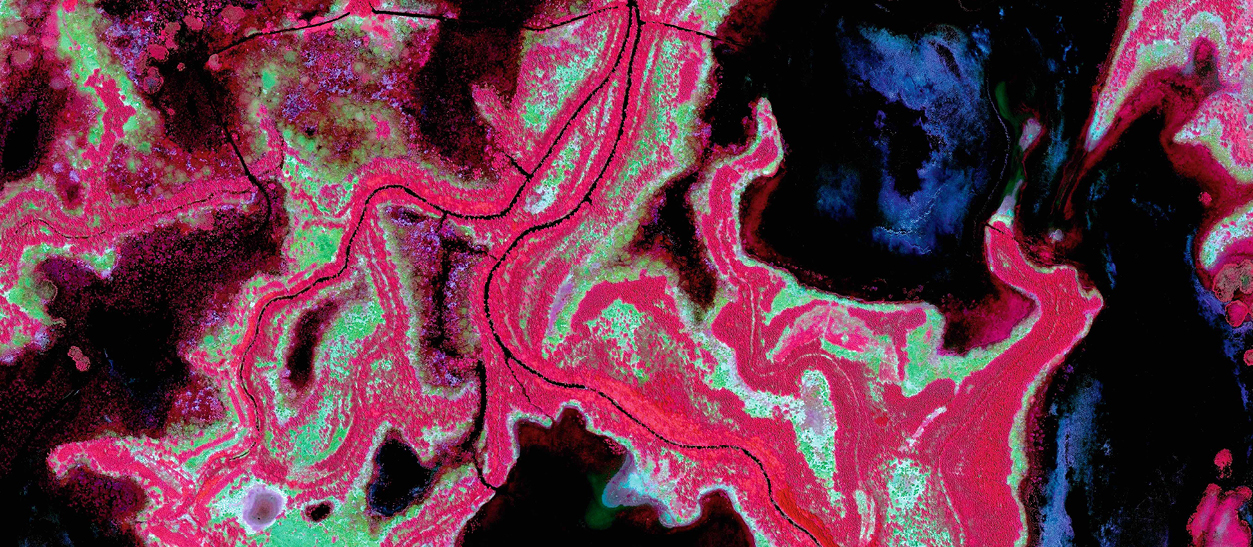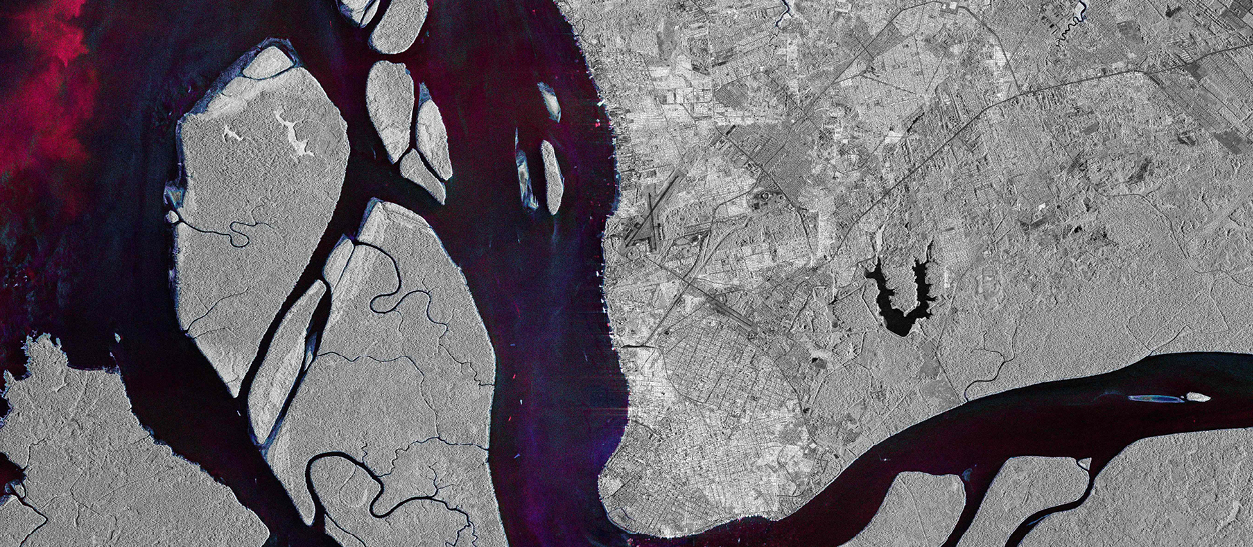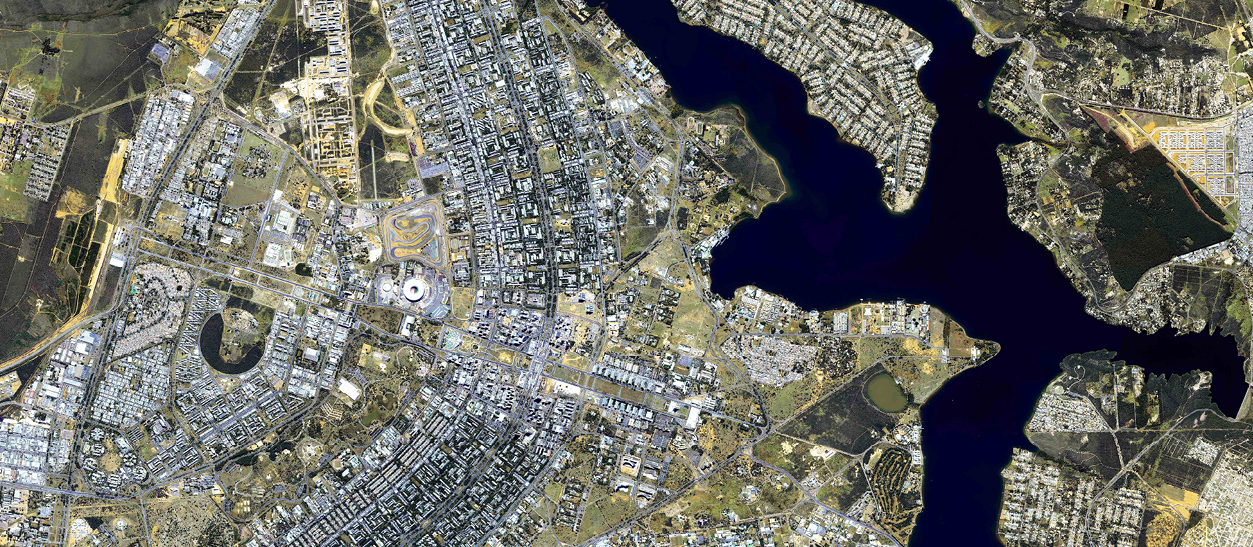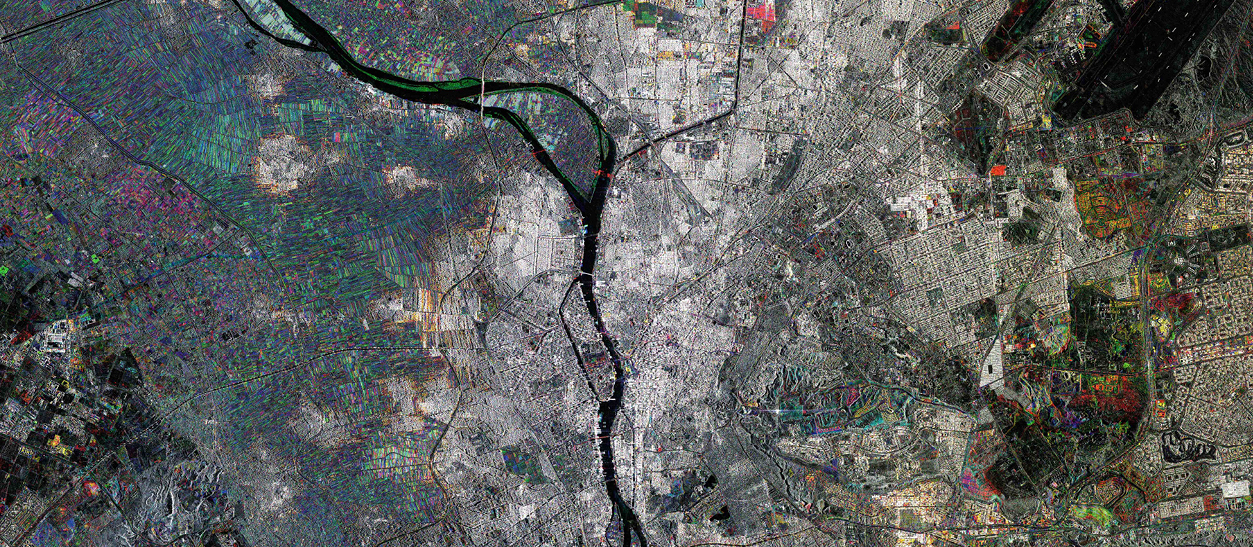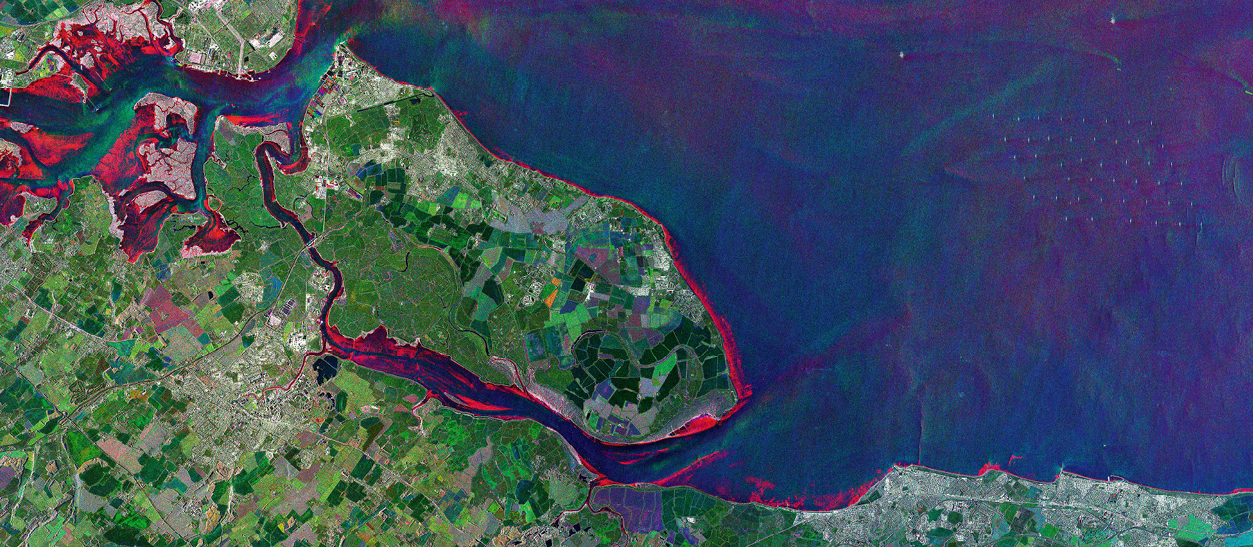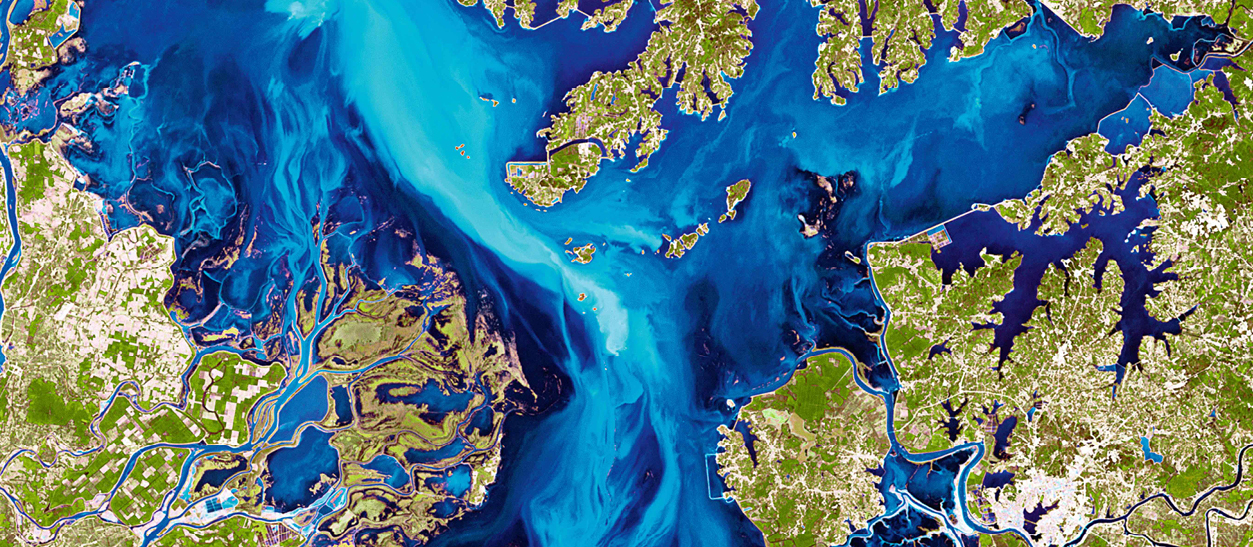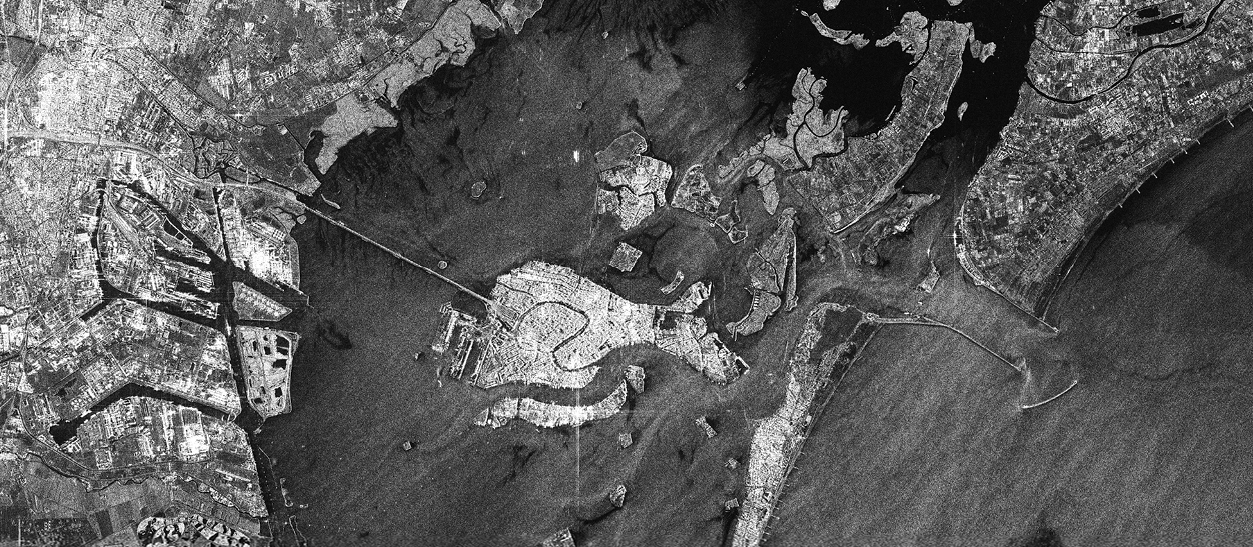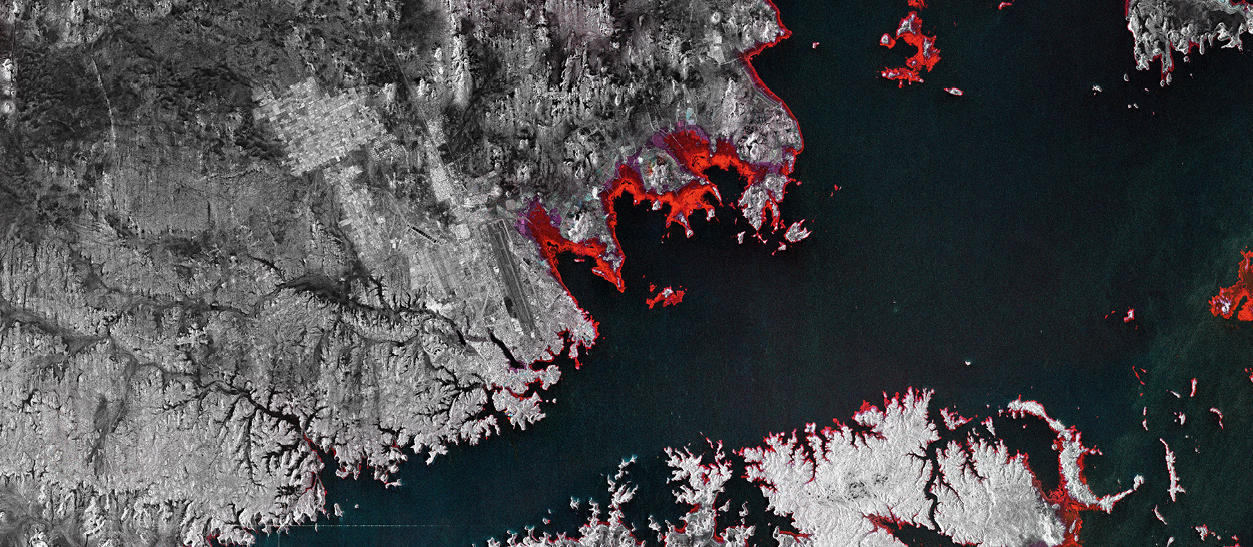
Lake Nasser, also called Lake Nubia, is a vast reservoir in southern Egypt and northern Sudan. It is one of the largest man-made lakes in the world, nearby the Abu Simbel archaeological site (a UNESCO world heritage site). In the 1960s, President Nasser decided to build the Aswan High Dam across the Nile, forming this huge lake; the new dam provided inhabitants with water to drink and for irrigation. The creation of the lake risked submerging a number of important historical sites — notably the tombs and temples at Philae and Abu Simbel—under its waters. The Egyptian government appealed to UNESCO, which lent assistance by having many of the monuments dismantled and reconstructed on safer ground. In this Multi-temporal picture of Lake Nasser, the coloured areas correspond to those acquired in various months throughout 2017: the red ones in July, the green ones in November and the blue in September. The most evident feature is the variability of the level of the artificial lake, particularly low in July (the red areas are the driest).
Lake Nasser, Egypt
COSMO-SkyMed image © ASI Processed and distributed by e-GEOS


